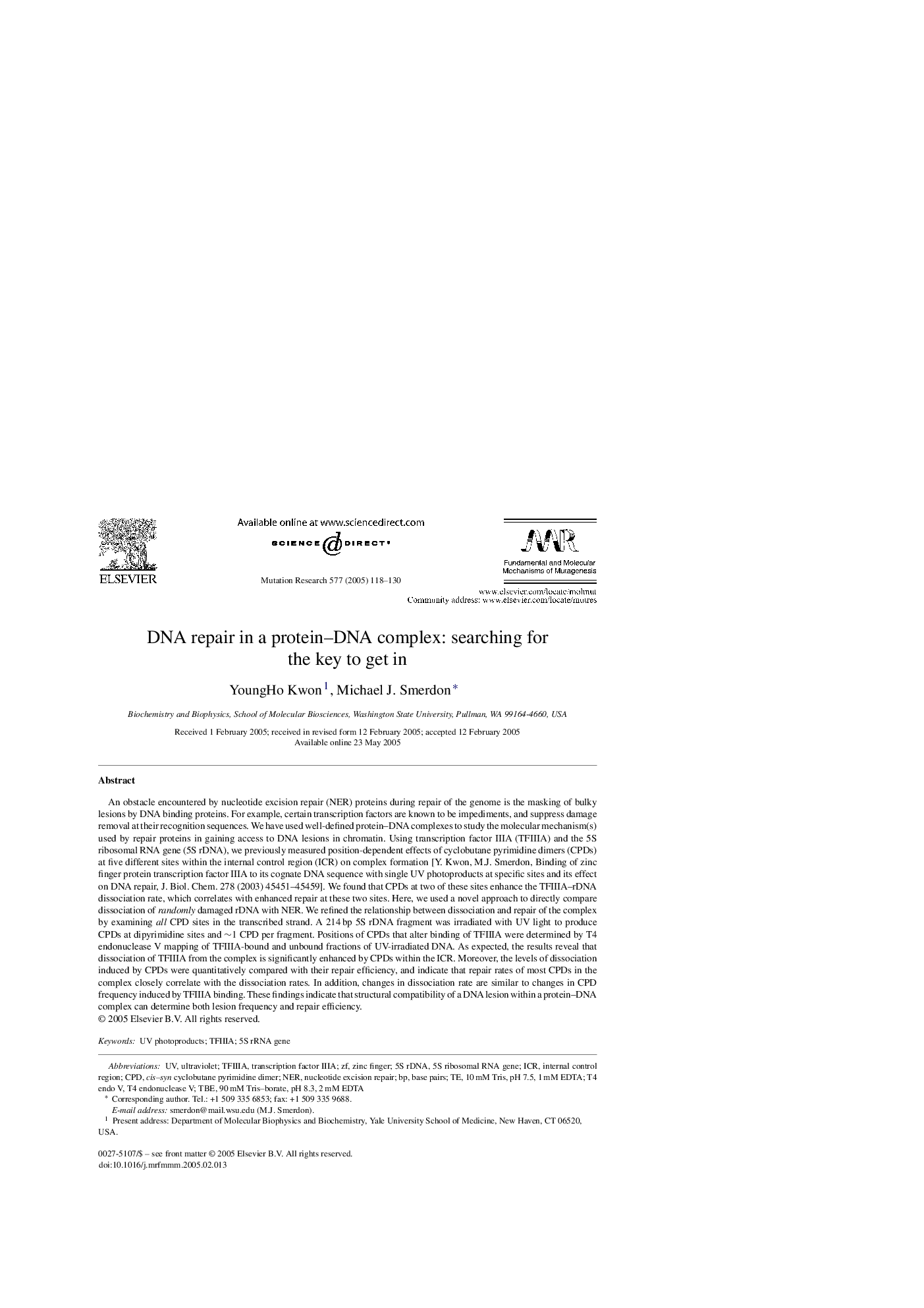| کد مقاله | کد نشریه | سال انتشار | مقاله انگلیسی | نسخه تمام متن |
|---|---|---|---|---|
| 9909055 | 1548430 | 2005 | 13 صفحه PDF | دانلود رایگان |
عنوان انگلیسی مقاله ISI
DNA repair in a protein-DNA complex: searching for the key to get in
دانلود مقاله + سفارش ترجمه
دانلود مقاله ISI انگلیسی
رایگان برای ایرانیان
کلمات کلیدی
ICRTBE5S rDNAUV photoproducts5S rRNA genecpd - CPDNER - DOWNT4 endonuclease V - T4 endonuclease vUltraviolet - اشعه فرابنفشZinc finger - انگشت رویnucleotide excision repair - تعمیر مجدد نوکلئوتیدیbase pairs - جفت پایهTFIIIA - راهنماییtranscription factor IIIA - فاکتور رونویسی IIIAinternal control region - منطقه کنترل داخلی
موضوعات مرتبط
علوم زیستی و بیوفناوری
بیوشیمی، ژنتیک و زیست شناسی مولکولی
تحقیقات سرطان
پیش نمایش صفحه اول مقاله

چکیده انگلیسی
An obstacle encountered by nucleotide excision repair (NER) proteins during repair of the genome is the masking of bulky lesions by DNA binding proteins. For example, certain transcription factors are known to be impediments, and suppress damage removal at their recognition sequences. We have used well-defined protein-DNA complexes to study the molecular mechanism(s) used by repair proteins in gaining access to DNA lesions in chromatin. Using transcription factor IIIA (TFIIIA) and the 5S ribosomal RNA gene (5S rDNA), we previously measured position-dependent effects of cyclobutane pyrimidine dimers (CPDs) at five different sites within the internal control region (ICR) on complex formation [Y. Kwon, M.J. Smerdon, Binding of zinc finger protein transcription factor IIIA to its cognate DNA sequence with single UV photoproducts at specific sites and its effect on DNA repair, J. Biol. Chem. 278 (2003) 45451-45459]. We found that CPDs at two of these sites enhance the TFIIIA-rDNA dissociation rate, which correlates with enhanced repair at these two sites. Here, we used a novel approach to directly compare dissociation of randomly damaged rDNA with NER. We refined the relationship between dissociation and repair of the complex by examining all CPD sites in the transcribed strand. A 214Â bp 5S rDNA fragment was irradiated with UV light to produce CPDs at dipyrimidine sites and â¼1 CPD per fragment. Positions of CPDs that alter binding of TFIIIA were determined by T4 endonuclease V mapping of TFIIIA-bound and unbound fractions of UV-irradiated DNA. As expected, the results reveal that dissociation of TFIIIA from the complex is significantly enhanced by CPDs within the ICR. Moreover, the levels of dissociation induced by CPDs were quantitatively compared with their repair efficiency, and indicate that repair rates of most CPDs in the complex closely correlate with the dissociation rates. In addition, changes in dissociation rate are similar to changes in CPD frequency induced by TFIIIA binding. These findings indicate that structural compatibility of a DNA lesion within a protein-DNA complex can determine both lesion frequency and repair efficiency.
ناشر
Database: Elsevier - ScienceDirect (ساینس دایرکت)
Journal: Mutation Research/Fundamental and Molecular Mechanisms of Mutagenesis - Volume 577, Issues 1â2, 4 September 2005, Pages 118-130
Journal: Mutation Research/Fundamental and Molecular Mechanisms of Mutagenesis - Volume 577, Issues 1â2, 4 September 2005, Pages 118-130
نویسندگان
YoungHo Kwon, Michael J. Smerdon,